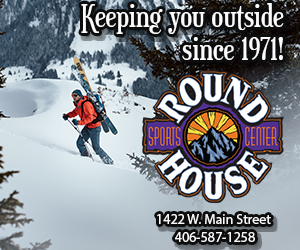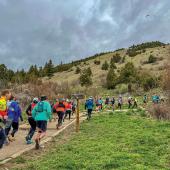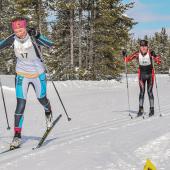Broken Blisters and Shin Splints
The beauty of running.
When I was in third grade, innocently running around the playground at recess, Justin Newman hauled off and kicked me in the shins as hard as he possibly could. If you have ever been kicked in the shins or stumbled into a coffee table, you too will remember the stabbing pain in your muscles and bone, causing you to bellow and keel over in pain. As a result of that incident, I have been carefully protecting my shins for the last twenty years, praying I would never again have to feel the pain induced by Justin Newman…but then I started running.

Not too long ago, I was running along Peets Hill, wondering if I would ever find this so-called, euphoric "runner's high," when one running step brought me to a stumbling halt. I screamed out in agonizing pain and grabbed for my shins. Where was this pain coming from? What was this horrible sensation?! I stopped and strangely the pain subsided so I straightened up and continued on. I started jogging and mother f$%&#@! How could this pain come from simply putting one foot in front of the next? It felt like Justin Newman was running alongside me, kicking me and laughing, relishing in my suffering.
The diagnosis: shin splints—just one of the many injuries runners endure through training and racing. After talking to yoga instructors, other runners, and a podiatrist who told me to give up running, it got me thinking: what else is going on with my body while I run? What is preventable, and what is inevitable? And the million-dollar question: with all of these injuries, why do I keep running?
Dead-In-Your-Tracks Shin Splints
There are many vague explanations of what defines “shin splints,” but WebMD explains that they “aren't really a single medical condition. Instead, they're just a symptom of an underlying problem,” such as swollen muscles, a collapsed arch, or stress fractures—minuscule fractures in the shinbones.
What am I doing wrong? Through research and experience I have found that my shin splints flare up when I run too hard too fast, get lazy and use improper form, or run consistently on asphalt.
The highly technical medical treatment? Stop running. It's often hard for athletes to understand such a simple treatment, but it's the best thing for your legs—just give it a rest and ice up.
Feet On Fire
Many runners believe blisters to be an inevitable part of running; run long enough and the skin will fall off. Well, medical experts and coaches are quick to debunk the myth and assure us that blisters can be avoided and treated if they do pop up, (or rather, juice up).
Blisters on the feet are a result of a friction on the skin, sometimes caused by moisture, debris in the shoes, or consistent rubbing in one spot. To fight blisters before they start, reduce moisture through moisture-wicking socks, dig the rocks and sand out of your shoes, and make sure your shoes are the right size and provide room for swelling. Tape or lubricate tricky spots, and no matter what, don't ignore a “hot spot” on your foot before it turns into a race-stopping blister.
The Interconnected Body
Despite the training and preparation, many runners are bound to have sore backs, hips, even shoulders—body parts seemingly unrelated to the feet and legs that take the pounding during a run. Yoga Journal says that, contrary to popular belief, “The pain most runners feel is not from the running in and of itself, but from imbalances that running causes and exacerbates.”
I used to completely zone out while running, listening to awful pop music or thinking about the pizza I would scarf after the run. Lately, though, I have been trying to pay attention to my body, trying to figure out what could be the cause of my sore back and hips when I run. Strangely enough, through the help of my yoga instructor, I have found that my left hip is out of alignment because I am constantly balancing on my left foot. (Imagine a female standing idle, hip cocked out to one side, hand on hip… that's me.) Unbeknownst to me, the pain I felt while running was caused by muscles connecting all over my hips and back.
Treatments for running aches and pains vary from basic stretching to yoga classes, massage, chiropractic work, and even surgery. Talk to several experts in various fields to find out what method of treatment and prevention you should be using. Good resources include experienced yoga instructors, physical therapists, and physicians—not part-time running bloggers.
Fake It 'Til You Make It
My back hurts, I'm pulling muscles, I'm enduring shin splints, and I'm losing toenails, (I'm down to seven.) Any normal person would ask, why the hell are you doing this? Believe me, I ask myself that question all the time. But somehow, despite the pain and mental lethargy, it's only a matter of time before I slip into "the zone," some sort of mobile meditation, or as many call it, “the runners' high.” Is it real or is it a myth?

Those who hate running don't believe it; those who have felt the “high” swear by it; doctors debate it. Recent medical research actually proves that running releases endorphins— the more one runs, the more endorphins are released. I have certainly felt awesome during and after a run, feeling the “high,” believing I can take on the world. Despite that, I'm still looking for the medical term for “This sucks, I'm going to throw up.”
With only two weeks until a full marathon, and four months until the Ridge Run, I’m chasing the high and hoping my hips won’t give out. But above all else, I am simply praying I won’t lose all of my toenails before I cross the finish line.
This is part six of a series about training for, and (hopefully) running the Bridger Ridge Run (on August 10), by Jenny Sheets. See part one, part two, part three, part four, and part five here












